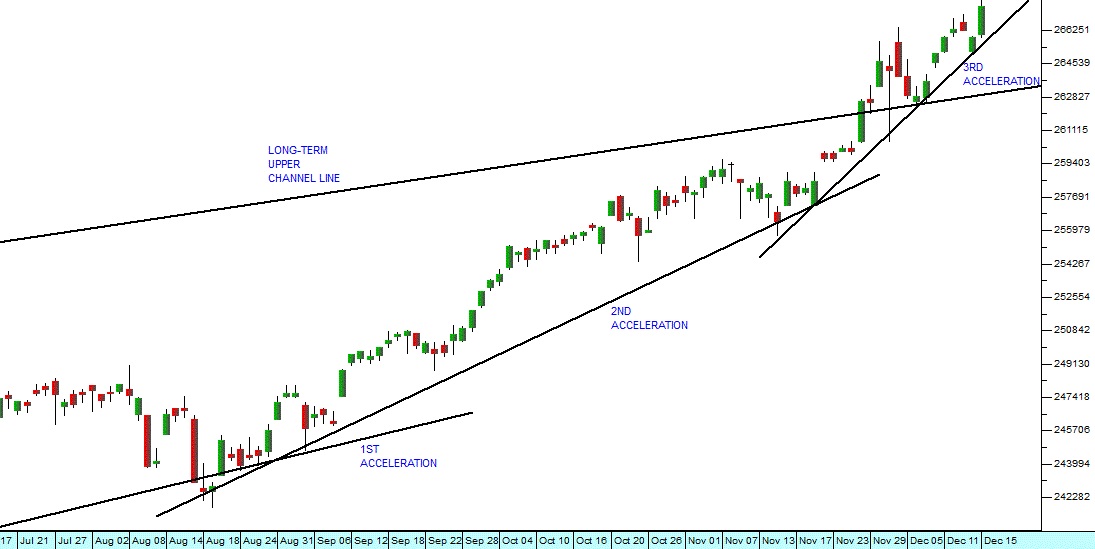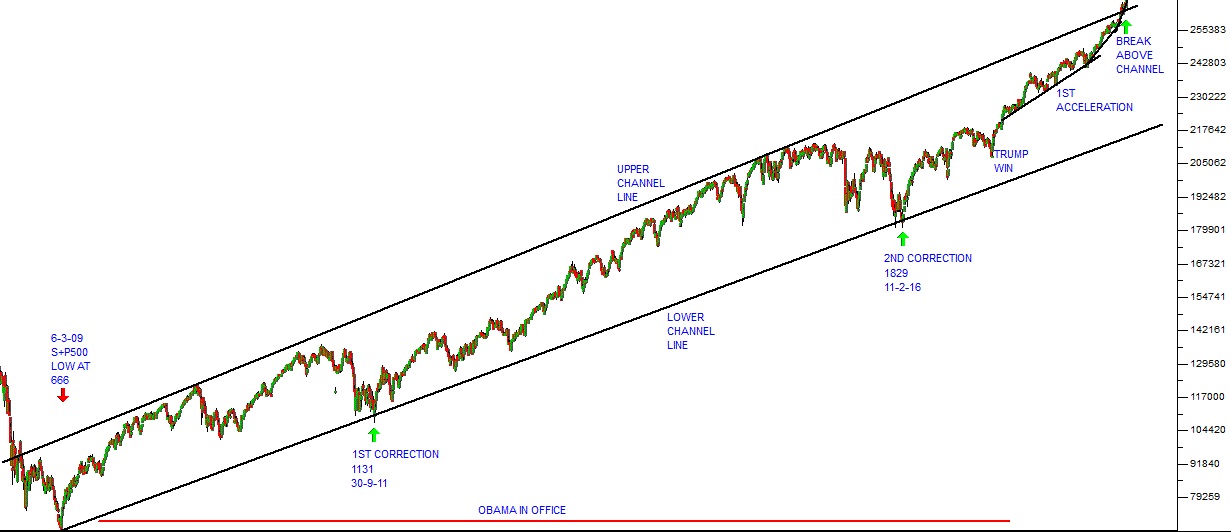The 3rd Acceleration
The upward trend on the S&P has accelerated even further. This third acceleration is well illustrated by the chart below:

Here you can see the three accelerations in the upward trend. The first began in December 2016 and persisted until August this year. This 2nd acceleration lasted until the middle of November and then it was superceded by the 3rd, even steeper acceleration � which has now been confirmed by its third touch-point and Friday�s strong upward move to a new all-time record high.
It is also interesting to note that the exact position of the long-term upper channel was confirmed, when the S&P broke up through it (on 30th November) and then retraced to touch it on 6th December (now as a resistance line), before accelerating away. The break above the long-term upper channel line confirms the exponential nature of this great bull market and suggests that, far from being at or near its top, it is only just getting going. There has been a notable absence of Wall Street gurus willing to publicly declare the top of the market or advise their followers to sell out. This is evidence that the gurus no longer feel confident of their models. This bull market has far exceeded what most of them thought was possible. It is a time when many of them will be trying to understand how this bull could be made to fit what they thought they knew. For many, it has made their long-held models of Wall Street almost irrelevant. But if you have been reading these articles you will know that what we are looking at is the long-anticipated blow-off bubble in asset prices. The three driving factors for this boom (previously mentioned) are:
- The massive and on-going creation and injection of money into the world economy.
- Technological advancement and the impact it is having on productivity at all levels.
- The drop in energy prices which began with the halving of the oil price, but which will continue with the spread of renewable energy generation.
These factors are beginning to make themselves felt in the fact that the US economy is now creating an average of 250�000 jobs a month and unemployment is at record low levels. Putting this bull market into perspective, it began in March 2009 and has had two major corrections. From that point its progress has been slow and broken by two major corrections � but now it is beginning to gain momentum.

Of course, nothing in the markets moves in a straight line � so we should expect some sort of correction sooner or later. But that correction, when it comes, will be just that � a correction and a buying opportunity � not a new bear trend.
← Back to Articles